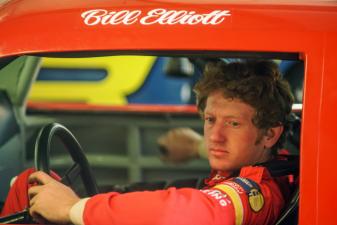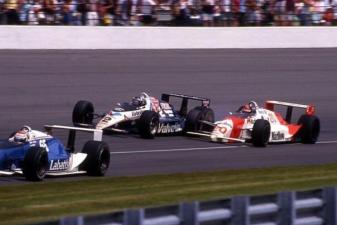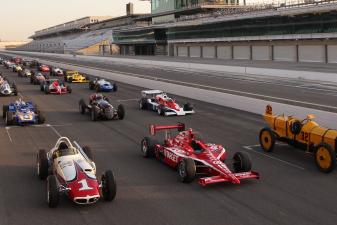The Beginnings of a Legend

Journalists Al Pearce and Mike Hembree chronicle the journey of NASCAR’s best as they drive their way to that landmark first victory in 50 First Victories. With a combined ninety years of coverage of one of America’s grassroots sports, they bring a wealth of knowledge and experience to the stories of these fast-and-furious heroes, drivers who ran to the ragged edge—and often past it—in pursuit of the checkered flag. In this excerpt from the book, catch a sneak peek at Dale Earnhardt Sr.'s path to victory.
Doug Richert fired up a cigarette in the infield at Bristol Motor Speedway, unaware it would be one of his last smokes. Ever.
Later that afternoon—April 1, 1979 (yes, April Fools’ Day), Richert stood in victory lane at Bristol with his fellow crewmen and the driver who had carried them there. Dale Earnhardt had won the Southeastern 500, scoring his first NASCAR Cup victory.
It was no joke, no April Fools’ trick. And there stood Richert, eighteen years old and still basically a kid in this big new world of NASCAR, with his cigarette pack torn to pieces.
“In 1979 we won that first race at Bristol, and it was like, ‘Whoa,’” Richert remembered. “I quit smoking in victory lane. I told the guys in the shop that when we won for the first time, I’d quit. I tore them up in victory lane at Bristol. Haven’t touched one since.”
It was cold turkey for Richert but a hot moment for the twenty-seven-year-old Earnhardt, who used Bristol as his platform for turning raw talent into real success. A Carolinas short-track star who had muscled his way into NASCAR’s top series, Earnhardt on that Sunday began the journey that would carry him to heights unknown by previous drivers and to riches far beyond the normal reach of a North Carolina mill-hill kid.
Earnhardt won the Cup Rookie of the Year Award that season, grabbed the series championship from older and smarter drivers the next year, and was on his way to seven championships and a type of fan worship that only Richard Petty had experienced.
He became a legend.
Petty won his seventh—and final—championship in 1979. Earnhardt’s title the next year was the first of his seven. The Earnhardt era had barely begun. He improved quickly, evolving from the fender banging of late model stock racing to the much longer and more complicated racing demanded by Cup events. He kept his super-aggressive driving form but factored in the new dynamics needed to score at stock car racing’s highest level.
“It’s like he’d been there forever,” said Richert, who was promoted from mechanic to crew chief for the 1980 season after veteran crew chief Jake Elder left the Rod Osterlund–owned team. “It was really kind of amazing how well it flowed along and how competitive he was.” It was Elder, by the way, who famously offered Earnhardt some overly colorful advice in Bristol’s victory lane: “Stick with me, boy, and we’ll have diamonds big as horse turds.”
Elder, who had a reputation for jumping suddenly from one team to another, was with Earnhardt long enough to pass along some of the encyclopedic knowledge he had gained from years in the sport. “I remember Jake talking to him about running off the top of the corner and don’t overdrive and things like that,” Richert said. “I remember Dale complaining somewhere about how the car was pushing out of Turn Four. Jake got on the radio and said, ‘Dale, I can do a lot of things, but I can’t stop the wind from blowing.’”
Earnhardt led 163 of the 500 laps in the Bristol win and held off veteran Bobby Allison by three seconds at the checkered. “This is a bigger thrill than my first-ever racing victory,” he said in the middle of a wild Bristol celebration. “This was a win in the big leagues, against the top-caliber drivers. It wasn’t some dirt track back at home.”








